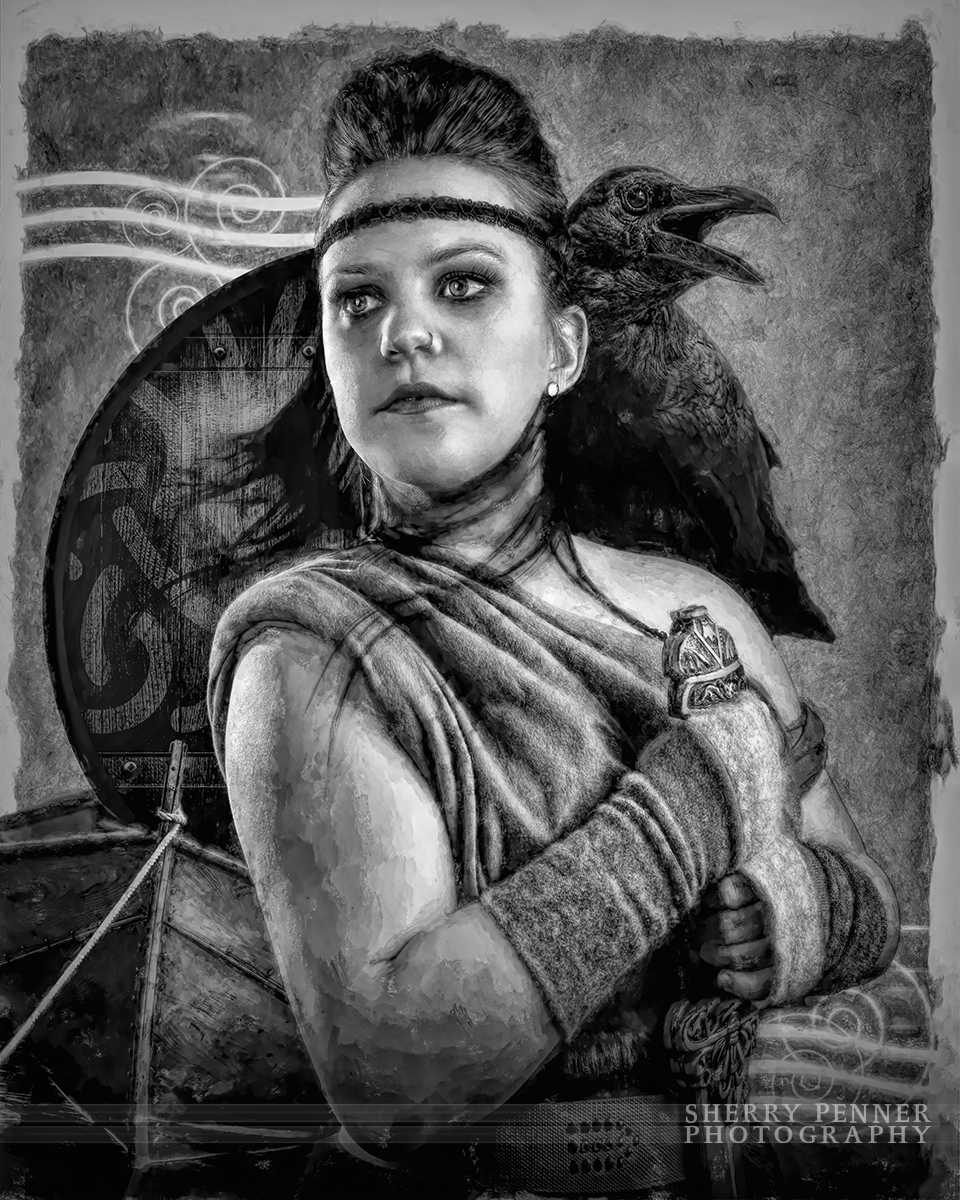In regards to how women have been treated in history it looks like the Vikings were ahead of their time.
Besides the whole raping and pillaging “thing” I have always been fascinated by the romanticized portrayal of the Vikings. So of course I had to include a Viking Female theme in this series. And if the tv show can be taken for “historical fact” women were warriors too. I won’t get in to my opinion on how all of this “disappeared after the introduction of Christianity”, we’ll save that for another day.
Hope you enjoy this portrait of a Viking Woman and don’t forget to subscribe to the blog.
The next two portraits from this series will be posted in February. I’ve made some changes to the editing style since I posted The Sheriff. I liked it better in black and white and will continue in this style. I have re-edited The Sheriff and you can see her in bw on my facebook page: Sherry Penner Photography
I got this definition of a Viking woman from Wikipedia:
Women had a relatively free status in the Nordic countries of Sweden, Denmark and Norway, illustrated in the Icelandic Grágás and the Norwegian Frostating laws and Gulating laws.[122] The paternal aunt, paternal niece and paternal granddaughter, referred to as odalkvinna, all had the right to inherit property from a deceased man.[122] In the absence of male relatives, an unmarried woman with no son could inherit not only property but also the position as head of the family from a deceased father or brother. Such a woman was referred to as Baugrygr, and she exercised all the rights afforded to the head of a family clan – such as the right to demand and receive fines for the slaughter of a family member – until she married, by which her rights were transferred to her new husband.[122] After the age of 20, an unmarried woman, referred to as maerand mey, reached legal majority and had the right to decide her place of residence and was regarded as her own person before the law.[122] An exception to her independence was the right to choose a marriage partner, as marriages were normally arranged by the family.[123] Widows enjoyed the same independent status as unmarried women. A married woman could divorce her husband and remarry.[124] It was also socially acceptable for a free woman to cohabit with a man and have children with him without marrying him, even if that man was married; a woman in such a position was called frilla.[124] There was no distinction made between children born inside or outside marriage: both had the right to inherit property after their parents, and there were no “legitimate” or “illegitimate” children.[124] Women had religious authority and were active as priestesses (gydja) and oracles (sejdkvinna).[125] They were active within art as poets (skalder)[125] and rune masters, and as merchants and medicine women.[125] They may also have been active within military office: the stories about shieldmaidens is unconfirmed, but some archaeological finds such as the Birka female Viking warrior may indicate that at least some women in military authority existed. These liberties gradually disappeared after the introduction of Christianity, and from the late 13th-century, they are no longer mentioned.

Next week I’m off to try my hand at a little travel photography, this is not my realm of expertise but me and my mirrorless travel camera and my Sweetie are headed out for some exploring and I hope you join us along the way. Subscribe to the blog this is where I will be posting my travel journal.

[…] session in a different way then I have for the first two portraits in this series, The Sheriff, and The Viking, so when it came to the editing the piece weren’t fitting together in the style of the previous […]